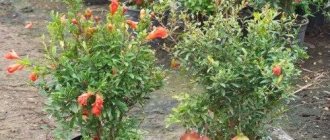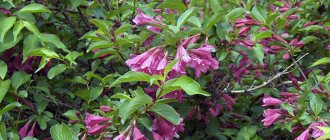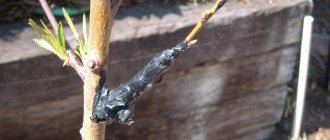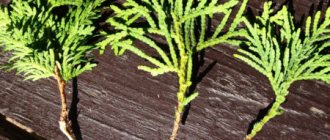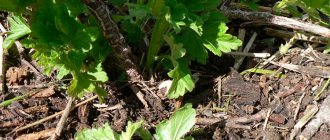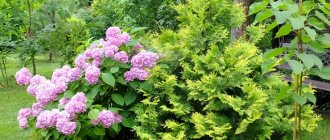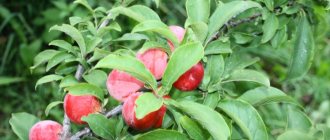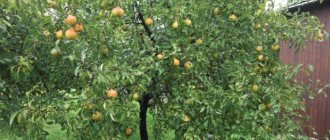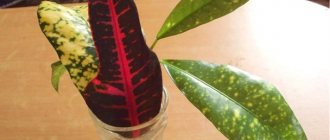Subtleties of propagating spirea by cuttings
Spiraea is a genus of ornamental shrubs. This plant is often used in landscape design to decorate garden plots. Many amateur gardeners are wondering how to propagate these beautiful bushes. One of the simplest methods is to propagate spirea from cuttings. We will consider the subtleties of plant cuttings in more detail in this article.
The right time
The best time to propagate spirea from cuttings is spring. However, some plant varieties may have different cutting times. For example, those varieties that bloom in spring are best propagated in summer. You can also grow shrubs in the fall.
Whatever the time of year, it is also recommended to take into account weather conditions. It is recommended to harvest shoots in rainy and cloudy weather. If propagation is carried out in the spring, then it is advisable to wait until the active growth of greenery on the bushes ceases or, conversely, to harvest cuttings before the buds begin to swell. When breeding in the summer, it is important that the weather is not hot and dry, otherwise the cuttings may not take root, and it is also important that the spirea does not bloom during the breeding season.
If breeding is planned to be done in the fall, then you need to do it before the onset of frost. The branches are harvested in September, and rooting and planting in open ground must be carried out before the beginning of October. It will be important to insulate the spirea well for the winter. Otherwise, the process of growing shrubs is practically the same, regardless of the time of year.
Harvesting cuttings
As noted earlier, it is recommended to harvest branches in cool and cloudy weather. Branches are cut from healthy and strong bushes. If the plant has signs of damage by diseases or parasites, then before taking cuttings the bush must be treated with special means. After spraying, shoots can be cut off no earlier than on the fourth day. If it was not possible to cure the plant the first time, it is recommended to repeat the treatment of the bush. For propagation, you need to cut only straight branches growing upward. Brown shoots should not be older than one year.
If the harvesting of branches occurs in the summer, then those shoots on which flowering has already stopped are cut off. It is desirable that all the leaves on them are intact. Both very young cuttings and annual cuttings are suitable for propagation. The length of the cut branches should be about 11–15 cm. Each cutting should have at least 4 green leaves or buds. It is necessary to cut off the shoot with a sharp knife or blade at an angle of 30 degrees. The top of the branch also needs to be trimmed, but this time exactly at a right angle.
Important! It is recommended to trim the leaves a little: the two lower ones are completely removed, and the upper ones are shortened exactly by half. This procedure will speed up the rooting of cuttings, as it will ensure less moisture loss.
Diseases and pests
The plant is very resistant to most dangerous diseases, but sometimes gray mold or spotting may appear on the bushes. These are fungal infections that require fungicidal agents, for example, foundationazole or phytosporin-M, to combat them. There are also pests that can damage bushes if measures are not taken in time. Their list includes:
- rose leaf roller. It can appear on shrubs in late spring and damage leaves. To eliminate caterpillars, it is necessary to use pyrimor;
- spider mite In the presence of mites, spirea leaves begin to turn yellow, and a thin cobweb appears on their underside. Plants should be treated against pests with karbofos, acrex or tincture of tobacco dust;
- aphid. This pest can be found in the summer; aphids can damage both leaves and flowers. To eliminate it, you will need to treat the bushes with tincture of tobacco dust or the drug pirimor.
Damaged shrubs treated with drugs should stand for at least a day, covered with cellophane. If necessary, the procedure must be repeated several times and the bushes should be opened only after the pests have been completely eliminated.
Rooting
To stimulate root growth after cutting, it is recommended to place the branches in a special composition for some time. In the store for these purposes you can purchase such products as “Kornevin”, “Heteroauxin” and “Vympel”. After processing the branches, they need to be planted in small containers. Let's look at the rooting process step by step.
- To root shoots at home, you first need to prepare the substrate. The easiest way is to use wet sand. You can also mix sand with peat or use any other loose soil. It is recommended to treat the substrate with a fungicide to prevent root rotting.
- As for the containers in which the branches will be planted, any containers with holes in the bottom will do. Properly planting cuttings should be to a depth of 3 cm at an angle of about 45 degrees. It is necessary to maintain the angle of inclination so that the growth of the upper parts of the branches slows down, and root formation, on the contrary, intensifies.
- It is important that the soil is moist during planting. After the branches are immersed in the substrate, they also need to be sprinkled with water. It is advisable to cover the top of the cuttings with film or a cap from a plastic bottle. This manipulation is necessary to create conditions of high humidity and maintain temperature.
- Periodically, the seedlings are taken out of the shelter and moistened with a spray bottle. During cultivation, it is important to prevent the soil from drying out, but at the same time not to over-moisten the spirea. Containers with cuttings should be placed on the windowsill, where the sunlight will not be too bright.
- An alternative way to keep seedlings for rooting is to bury containers in the garden. Dry leaves or peat should be placed on top of the soil so that the root system does not freeze. In winter, containers with seedlings are put into the basement or transferred to another dark, cool place.
You can grow shoots not only in pots. If desired, a greenhouse can be built on the site for the spirea.
- First, the bed is dug up and organic fertilizers are added. It is recommended to add peat mixture and river sand to the soil. Then it is recommended to moisten the soil well.
- The branches are planted at a distance of at least 10 cm from each other. Next, you need to install the greenhouse frame and stretch the film on top. The polyethylene must be firmly fixed, pressed to the ground along the perimeter of the greenhouse with bricks or other heavy objects.
- It is recommended to open and ventilate the mini-greenhouse periodically. And also do not forget about regular watering of seedlings. For the winter, the film is removed and the cuttings are sprinkled with a peat mixture.
How to replant a plant
Hosta transplantation is carried out on a cloudy, cool day. You will need the mother bush itself, which you will replant completely or divide, garden shears, sawdust or peat mulch, water for irrigation, humus, a shovel and a dug planting hole.
Soil preparation
Some people grow this flower in containers so that they can transfer it to wintering or within the site. But more often, hostas are planted directly in open ground, since they are not afraid of frost and do not require complex care. Even without moving to another place, this flower can grow up to 20 years, but after 5-6 years it will constantly lose its decorative effect.
When choosing a place for transplantation, take into account the characteristics of the flower - it is keenly aware of drafts and grows well in partial shade. The northern side of the site, a lowland near an artificial or natural reservoir, is suitable. Depending on the variety, the plant may require more sunlight, especially varieties with brightly colored leaves.
You can also plant hostas in the shade of taller shrubs and perennials, or organize shading yourself using canopies, arches, and screens. This culture also grows well in the shade of gazebos, outbuildings, and buildings. You can place it in the shade of hedges and fences.
Almost any soil is suitable for hosta, but it shows more intensive growth in well-drained, light soil with a neutral acidity level. To balance acidic soils, you can add lime and compost.
The ideal soil option is humus loams.
But it is important to choose areas where the groundwater is low and there is no stagnation, since this flower does not tolerate wet soil. Hostas grow quickly in sandy soils, but they need to be enriched with complex mineral mixtures and humus. In terms of preparation before planting, dig up the area to the depth of one spade bayonet, add 15 g of potassium sulfate, 20 g of superphosphate and 15 g of ammonium nitrate
60 g of this mixture must be poured into each well.
In terms of preparation before planting, dig up the area to the depth of one spade bayonet, add 15 g of potassium sulfate, 20 g of superphosphate and 15 g of ammonium nitrate. 60 g of this mixture must be poured into each well.
Process technology
Transplant technology:
- When digging the ground, do not forget to remove the rhizomes of perennial weeds from it. Add sawdust and sand to heavy soils, and peat to sandy soils. Additionally, you can add ash. 3-4 hours before transplanting, pour the hole with a pale pink solution of potassium permanganate.
- The size of the hole should be 40 by 40. The depth should be at least 50 cm. Leave a distance between the holes, which is calculated based on the characteristics of the variety. For large spreading bushes - at least 100 cm, for dwarf flowers - 30 cm.
- Place a layer of drainage at the bottom of the hole; it can be crushed stone or crushed brick. Place a layer of humus on top.
- When replanting the entire hosta, carefully dig up the root system, leave a fairly large ball of earth on the roots, and carefully place it vertically in the center of the prepared hole.
- When dividing at the same time, the roots are cleaned, washed, and damaged or dried ones are removed. Then they are dipped in a slightly pink solution of potassium permanganate for 10 minutes to disinfect. After this, air dry for 2 hours and divide into equal parts with a knife. All cuts need to be sprinkled with ash. Such parts (like the entire bush otherwise) are placed vertically in the holes.
- The seedling is sprinkled with earth so that the root collar does not go underground. In the tree trunk circle, the soil must be trampled down, then it is watered and mulched with peat or humus.
If you perform the procedure in the fall, then immediately cover the seedling with material for insulation in the winter. It is not recommended to use synthetic materials or roofing felt as they do not allow air to pass through. Experienced gardeners advise simply sprinkling the hosts with spruce branches and dry leaves. Before winter, the leaves are removed, leaving 10-15 cm of trunks.
After replanting, you need to take care of the flower - perform regular watering, loosening the soil and weeding if the replanting took place in the spring. If you move the flower to a new place in the fall, fertilizers are no longer applied; shelter for the winter is required.
Plants that are weakened, attacked by pests, diseases, with yellow leaves and damaged stems are not replanted.
Further care
Caring for cuttings is not particularly difficult.
- It is important to ensure that the soil in the greenhouse or pots does not dry out. Surface spraying from a spray bottle can be carried out daily. In hot weather, it is recommended to moisturize at least twice a day.
- When a lot of drops settle on the inside of the film or bottle cap, you need to organize ventilation. It is important to ensure that the shoots do not touch each other if they are planted in the same container, and also that they do not touch the shelter, otherwise this may lead to the formation of rot.
- The root system will form in about three weeks. After this, the seedlings are taken out of the shelter and just need to be watered for another two weeks. After this time, the cuttings are planted in separate pots, if they initially grew in the same container.
- Pots with single shoots are taken out into the open air for final rooting. It is recommended to keep them in the shade. When the seedlings are fully grown, they are transplanted into open ground to a permanent place.
Agricultural technology for caring for and growing spirea
Spiraea is unpretentious and can grow without any attention from the gardener. However, if you follow simple care rules, this shrub can become a truly royal decoration of the garden.
Landing location
Spiraea is a shrub that prefers well-lit places. Southern, southwestern, southeastern locations are most suitable for this plant. The bush can also be planted in the shade, but in this case its growth may slow down and flowering will not be as intense.
Watering
The shrub needs to be watered when it has just undergone transplantation. In addition, it is necessary to water the plant during particularly dry periods. This does not apply to Japanese spirea, which requires abundant moisture in the soil cover. Without it, she could quickly die.
Weeding and loosening
Young, newly planted bushes require mandatory loosening and destruction of weeds in the near-root zone. These procedures will improve the air permeability of the soil and will not allow excess moisture to stagnate and cause rotting of the root system.
Mulching
To maintain the required amount of moisture, the root circle of the bush must be covered with an 8-10 centimeter layer of mulch. The bark of coniferous trees, dry leaves of reeds, and shells from small nuts are excellent for this.
Important! The presence of mulch will prevent the development of weeds.
Mulching the root zone
Top dressing
Typically, spirea does not need feeding. However, some gardeners still do it. If it is noticed that the plant has slowed down or is not blooming luxuriantly enough, then there is a reason to apply fertilizer.
Fertilizing is applied twice per season. The first time was at the very beginning of spring. In this case, nitrogen fertilizers are applied to stimulate the formation of deciduous mass. The second time - just before flowering begins. Potassium or complex fertilizers such as “Crystal-Agro” are added to the soil.
Transplantation into open ground
Planting in a permanent place is carried out after the cuttings grow roots. If rooting occurred in the fall, then planting in open ground is carried out only in the spring. If cuttings were carried out in spring or summer, then transplantation to a permanent place can be carried out both in the fall and next spring. When choosing a site, it is important to consider its illumination and soil composition. The place where the spirea will grow should be well lit and protected from strong gusty winds. The soil must be fertile, for which you can add fertilizers, and loose. If the soil is quite heavy, then dig a fairly large hole under the cuttings, and drainage is placed at the bottom.
There should be no holes at the landing site, so that after rains and melting snow, water does not stagnate near the bush. The hole for germinated cuttings should be 3 times wider and 1.5 times deeper than the root system. It is advisable to add peat and sand to the garden soil. After the seedling is placed in the hole, it is necessary to carefully straighten its roots. Planted shoots need to be watered abundantly and covered with mulch.
If several bushes are placed on one site at once, then the distance between them should be in the range from 40 to 70 cm.
How to propagate spirea by dividing the bush
This method will have a positive effect if the maternal sample is no more than 3-4 years old. The older the plant, the denser the earthen lump in the bark system. It is very difficult to remove it from the soil and wash it without damaging it. Any time of year except winter is suitable for dividing spirea. The optimal timing is late summer and early autumn. The main thing is that the soil is warm enough and the air is moist and not hot.
The division goes like this:
Spiraea japonica
- Dig up the mature plant to reveal at least 60% of the root system as compared to the top. Most likely, part of the thick, prostrate and tangled rhizome will have to be cut off.
- Wash the roots thoroughly. To do this, it is convenient to place them in a spacious container with water for 1 hour.
- Spread out the root shoots.
- Divide the bush with pruning shears into 2 or 3 parts. Each should have at least a couple of strong shoots and a root ball left. It is better that the parts turn out approximately equal.
- Slightly shorten the roots, update the cuts on them, trimming everything along the length. The most important are the cord-like shoots, which will ensure rapid establishment of the plant.
Advice. If you do not wash the rhizome from the ground, then when dividing you may get confused and leave one of the parts of the bush without a root at all.
To plant the resulting division:
- dig a hole;
- make a small mound of soil in its center;
- place the seedling in the middle, carefully and evenly spread the roots along the sides of the hill;
- fill the hole;
- Water generously several times: in hot weather - daily, in other weather - weekly.
Young spirea bush
Useful tips
To propagate spirea from cuttings, you do not need to be a professional gardener. This procedure is quite simple, even a beginner can cope with it. To successfully grow shrubs, you can use the following useful recommendations:
- to protect cut shoots from diseases and parasites, they can be treated with a solution of potassium permanganate;
- the best “neighbors” in the garden plot are coniferous crops;
- when planting in a permanent place, it is recommended to place drainage made of brick chips or a mixture of sand and pebbles in the hole;
- for one year after planting spirea in a garden plot, the plant needs careful care; Watering should be carried out constantly so that the roots cannot dry out;
- during active growth, bushes transplanted into open ground need to be fed; Mineral compounds and organic fertilizers can be used as fertilizing.
You can learn more about propagating spirea by cuttings from the video below.
The nuances of spirea propagation
It is more productive to carry out the spirea propagation procedure in early spring (before sap flow begins) or in the fall. These are the most favorable periods, since the soil is fully saturated with moisture, which contributes to better survival of the plant. If you have some experience, you can propagate spirea in the summer.
Spiraea, propagated by cuttings, turns into a lush flowering bush after 2–3 years
If time is lost in the spring, since the buds have already begun to swell, then it is recommended to wait until leaf growth stops. This happens before flowering in late spring. In summer, the plant is propagated approximately in mid-June - after flowering. Choose a cloudy day for work. Autumn breeding ends 2-3 weeks before the first cold snap - at the end of September or beginning of October.
Most gardeners prefer propagating spirea in the fall, since the planted plants do not require special care. It is enough to prepare them for wintering.
The most popular method of propagating spirea is cuttings. It allows you to preserve the original characteristics of the variety . Almost all varieties of spirea take root well from cuttings.
There are also other methods of reproduction:
The latter option is more suitable for species-specific specimens (for example, oak-leaved, white, gray and Japanese spirea), since the seeds of hybrids do not always germinate or as a result produce plants with altered data.
Seeds
Propagating spirea from seeds allows you to obtain many seedlings. Seeds do not require preliminary stratification or any kind of preparation. They are collected in the summer season (in August), and sown in the fall or next spring. It is important to have time to remove the fruits before they fall to the ground and open. They are cut slightly unripe and kept in the house for 2–3 weeks, then the seeds are dried and stored until sowing.
Spiraea has small dark brown seeds
- A loose and nutritious substrate is poured into a volumetric box - a mixture of vermiculite and peat in a ratio of 1:4.
- The seeds are evenly distributed over the surface. Then the container is buried in the garden bed.
- If sowing is carried out in the spring, then moisten the soil from a spray device and cover it with polyethylene. After which the box is removed to a place where the seedlings will be protected from direct sunlight and wind.
- As soon as the first shoots appear, the film is removed.
After sowing, the first shoots hatch within 2 weeks.
Further care of the crops involves daily moistening from a spray bottle and ventilation. Approximately 2–3 weeks after sowing, when the sprouts reach a length of up to 2 cm, dive is carried out. It is better to carry out the procedure after sunset. Seedlings are removed from the ground, several at a time, and then separated. If this is not done, then the more developed shoots will suppress the weakened ones. In the fall, before transplanting into open ground, pinch off too long roots by a third of the total length. With this method of germinating spirea, you should not expect flowering earlier than after 3 years.
Cuttings
Green and lignified cuttings are suitable for plant propagation in this way. They are harvested from last year's or annual shoots. The option is chosen depending on the season when rooting is carried out.
Green cuttings taken from branches formed in the current year and cut after the plant has flowered take root best.
In spring and autumn, it is recommended to take woody shoots, which are easy to find by the brown bark . Choose strong branches no thicker than 0.5 cm, growing exclusively in a vertical plane. Then the new plant will have a beautiful and even crown. Sticks 15–20 cm long are cut from the middle part of the shoots. Each should contain 5–6 living internodes. The lower cut is made at an angle, the upper cut is made even. The cuttings can be rooted immediately in open ground to a permanent place of growth or in a box and then transplanted to a garden bed.
How to propagate plants from green cuttings
A cutting is a part of a plant with one or more buds that is used for propagation. This method is very popular among gardeners for its simplicity and the large number of seedlings that can be obtained from just one branch of the parent plant. If you are a big fan of vegetation on your site, but are not ready to spend your entire fortune on it, we recommend propagating plants using cuttings.
Cuttings are green and woody. Most often, green cuttings are used - these are non-lignified shoots of the current year. They take root faster and take root better in a new place.
Green cuttings are the easiest way to propagate berry bushes. If you want to quickly propagate raspberries, currants or other berry crops, use the secrets of a specialist!
What plants can be propagated using green cuttings? Almost all:
- conifers,
- ornamental and berry bushes;
- roses;
- container plants;
- indoor flowers.
Cuttings are carried out as follows.
Step 1
The best time to take green cuttings is late spring - early summer. By this time, the plant already has many young, but not yet lignified, shoots. Select a healthy plant 5-8 years old (for slow-growing ones, two-year-old specimens can be used) and cut off several strong shoots at a sharp angle with a well-sharpened knife. The number of internodes on each cutting depends on the distance between them: from two to three or four.
Step 2
Trim the top of the cutting: the top cut should be made at a right angle. Remove the lower leaves and cut the rest in half. This will reduce the area of moisture evaporation.
Step 3
Dip the lower part of the cutting into any root formation stimulator (Kornevin, Kornestim or Heteroauxin). If you don’t have store-bought preparations at hand, you can use their folk analogues: yeast, aloe juice, egg white, etc.
5 folk remedies for quick rooting of cuttings How can you force a cutting to produce roots in a short time? The answers are in our article.
Step 4
Dip the cutting into the prepared moistened substrate. To make rooting faster and easier, the soil should be light and loose. The following soil mixtures can be used:
- sawdust and peat (1:1),
- garden soil with added sand (2:1),
- compost (or peat), sand and vermiculite (1:1:1).
Step 5
The speed of rooting of cuttings largely depends on the microclimate that you create for it. The following conditions are considered ideal for rapid root formation: almost one hundred percent humidity and high (20-25°C) temperature. The easiest way to achieve such indicators is in a greenhouse or greenhouse. If you do not have such structures, simply cut a plastic bottle into two parts and cover each cutting with it. Water the cuttings regularly and shade them if the temperature under the shelter is higher.
Step 6
The speed of rooting varies among different plants. For some, two to three weeks are enough, while others begin to grow only after a few months. If the cutting begins to appear new leaves from the axils, it means that the cutting is alive and has taken root; if the shoot turns yellow and withers, it means it has not taken root - you can throw it away. After rooting, you should not immediately transplant the young plant to a permanent place. Let it get stronger, survive the winter, and only then replant.
Personal experience: how to propagate difficult-to-root plants using green cuttings. Do the cuttings take root? Try the simple but effective method of the Altai agronomist.
Useful tips from experienced gardeners
In order for young spirea to take root successfully and delight with lush flowering, it is recommended to listen to some professional recommendations:
- To grow spirea, select a well-lit area with protection from drafts. It’s not scary if there is light shading.
- Preference is given to drained, loose and fertile soil. Optimal composition: garden soil, peat and river sand (all components are taken in equal proportions).
- When transplanting seedlings, leave the root collar slightly open. Be sure to mulch the root space with humus.
- If several plants are planted nearby, the distance between them should be at least a meter. When you plan to grow a hedge, the planting density will be less - 40–50 cm.
- There is no need to insulate adult plants for the winter.
The first year after planting, the perennial needs careful care: watering - once every 2 weeks (10 liters per bush), fertilizing - liquid mineral compounds (in spring) and mullein diluted in water with the addition of superphosphate (in autumn).
Spirea care
To achieve maximum decorative features, you should provide your spirea with quality care. It needs to be trimmed into the desired shape, monitor the leaves and branches, and also control pests.
How to care for spirea
Among the varieties of spirea, there are those that love a lot of light, and there are those that behave better in conditions of a lot of shade. If we talk about the type of soil, soil with a loose consistency and a high level of nutrients is more suitable.
In addition to the soil, it is also important to have a drainage layer and 7 cm of mulch on top of the ground
The spirea flower needs regular moderate watering because the roots are not very deep. During dry climates, the plant should be watered every 14 days, using 1.5 buckets of liquid. It is also necessary to ensure that the soil is loosened at all times and free of weeds.
Feeding is carried out in several stages. The first procedure using a complex product with a mineral composition is carried out after pruning. On the 15th of July, a solution of mullein with the addition of superphosphate is used for fertilizer - 10 grams per bucket of solution.
There is also a small chance of aphids and spider mites appearing on the plant. To remove aphids, use pirimor, and to fight mites, use karbofos.
Spirea pruning
Due to the fact that this plant grows at a fairly high speed, pruning of spirea is carried out according to a certain system. Those varieties that bloom in spring have inflorescences along the entire length of the stems. For this reason, they should be pruned only once after winter frosts, removing the ends of the branches damaged by the cold. But when the plant reaches the age of 7-14 years, it is cut almost to the level of the stump.
When this stump sprouts new shoots, you will need to select about five healthy, full-fledged stems in order to then form a shrub. All stems that were not selected must be removed. After a couple of years, those stems that have become weak or damaged, as well as those that have already become old, are cut off. The ends of the stems need to be trimmed only in the spring before the buds open completely. If we talk about old branches, they can be removed at any time.
Late-blooming varieties should be pruned annually when spring arrives. Some branches are removed to the level of the first bud, and the weakest and smallest branches are removed completely
It is important to monitor the condition of the shoots in order to promptly remove those that begin to age, because over time they will become dry
After the 4th anniversary, specimens are pruned to a height of 30 cm every year. If, despite all this work, the plant is still weak, it will have to be replaced. Typically, the lifespan of species that bloom in summer is about 15-20 years.
Reviews
Last year I made a cutting from my spirea sulfur Grefsheim. I planted it in a pot. He has grown up over the summer. I buried the pot in the ground for the winter, and in the spring the cuttings in the pot have already bloomed! Now it has started to grow rapidly. I plan to plant it so that the bush can be seen by me at least through some window, since its “mother” sits in front of the house, that is, behind the fence from me and decorates the lives of neighbors and passers-by.
Natalia
This year I buried branches in mine, having previously cut them at the burial site. Successfully.
Olga
https://www.websad.ru/archdis.php?code=61371
I'm not wise with my spirea. I cut the cuttings into cuttings. Earth + a small layer of sand. They take root even without jars in 2 weeks, and they are completely free under the jars. After a month and a half, the bushes are already growing
Elena
https://www.websad.ru/archdis.php?code=61371
All of the listed spirea propagation options are suitable for most common species. Beginner gardeners are recommended to start with a simple method - cuttings. And after gaining experience, move on to more complex options.
Growing spirea from cuttings: practical tips
To obtain a dense hedge from one flowering shrub, it is enough to collect, root and plant several of its cuttings. Gardeners recommend paying attention to spirea: propagation by cuttings in spring, summer and autumn is equally successful for this plant. In order for the bush to be strong and have a beautiful shape, the simplest rules of care should not be neglected.
When and how to harvest cuttings?
Spiraea is an ornamental shrub, represented by many unpretentious varieties of different heights and shades from white to deep red. The perennial successfully reproduces by both seed and vegetative methods. The advantage of the latter method is the preservation of all varietal characteristics of the mother plant. Any spirea hybrid can be propagated by cuttings, while seed propagation is used only for species spirea. Reproduction can be carried out throughout the growing season until autumn.
Rooting in sand, a jar of water, on the site
The rooting percentage of this perennial is high - up to 70%. If you use root growth stimulants, the survival rate of the branches increases to 100%.
Preparing for rooting:
- All the top parts of the branches need to be cut off. On a workpiece whose length is 15-20 cm there should be 4-5 leaves left.
- All lower leaves are removed, and the upper ones are shortened to half. This will reduce moisture evaporation.
- An oblique cut is made from the bottom of the branch.
- Before planting, the workpieces are placed in a solution of a root formation stimulator for 10-12 hours. The drug Epin (1 ml per 2 liters of water) is suitable.
The easiest option to root a spirea is to place the cuttings in water, but this method makes the plant less resistant to adverse conditions. The cuttings become brittle and can quickly rot. Experienced gardeners prepare sand or a special substrate for planting.
You can root the cutting in damp sand, deepening it 2-3 cm. It is placed at a slight angle to ensure enhanced growth of the root system by inhibiting the development of the upper bud.
You can plant the workpieces immediately on the site. To do this, prepare a substrate from sand and peat, taken in equal proportions. Planting rules are the same as for growing in sand.
Caring for small seedlings before transplanting into open ground is not so difficult. There are several rules:
- The container is covered with film or a transparent lid to create a greenhouse. A plastic bottle and glass jar will do.
- Every 2-3 days the cover is removed and sprayed.
- The pots are placed on a windowsill with diffused lighting. Another option is to bury the pot in the garden and cover it with leaves and spruce branches. In the spring, with the appearance of new roots, the plant is transplanted to a permanent place of residence.
Autumn transplant
Reproduction and replanting applies to young plants that are 4 years old. If the bush is older, then it may be difficult to move a clod of earth that is too large. In the autumn, it is allowed to divide and plant spirea, which bloom in spring and summer, the main thing is to carry out this operation after the end of leaf fall. The order of work has its own sequence.
- First, the bush is dug in around the circumference within the crown. At the same time, you don’t have to be afraid that root shoots extending beyond this line will be accidentally cut down - the spirea will not suffer from this.
- The bush is removed entirely, its roots must be washed by placing them in a wide container of water.
- After the soil particles settle, the rhizomes are rinsed well with a running stream.
- Using a disinfected tool, most often a pruner, it is necessary to divide the bush into 3 parts.
- Each division should have strong, developed roots and 2-3 stems.
- Small, thin root shoots are trimmed and tangled parts are straightened.
- In a planting hole dug according to the size of the roots, a mound is made from a nutrient mixture containing leaf soil, sand and peat.
- A seedling is carefully placed on top, all voids are filled with soil, and the tree trunk surface is compacted.
At the end of the procedure, it is necessary to water the plant well (2 buckets per bush), and cover the tree trunk circle with peat as mulch.
Mature shrubs without division are also replanted in the fall - this is the best time to move them, of course, after sanitary pruning.
